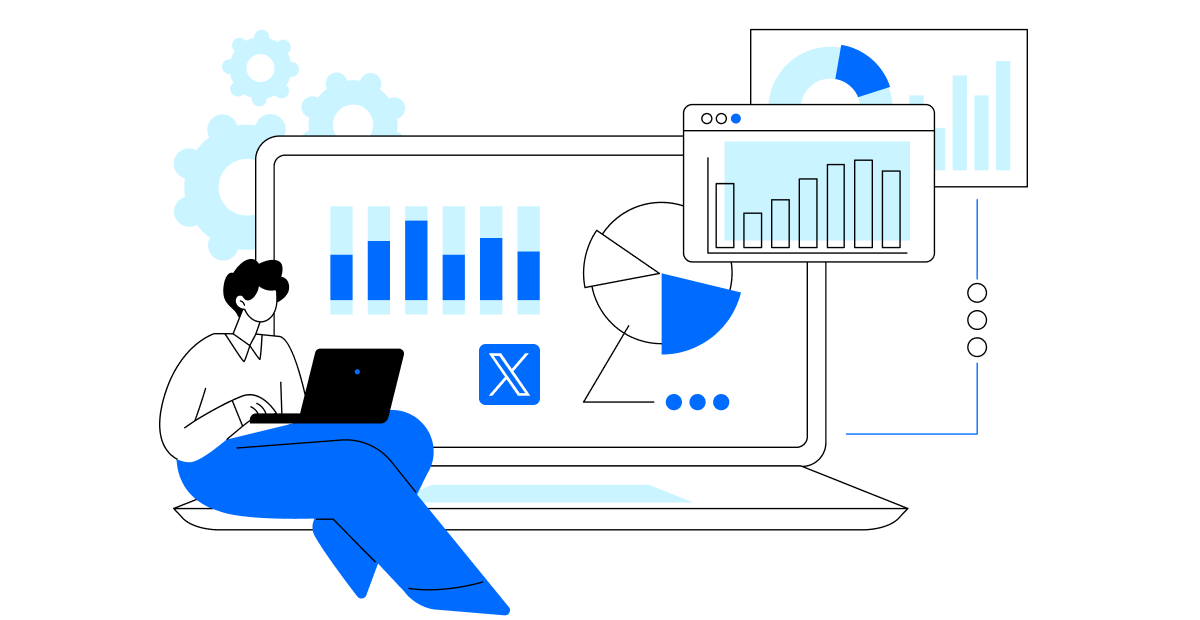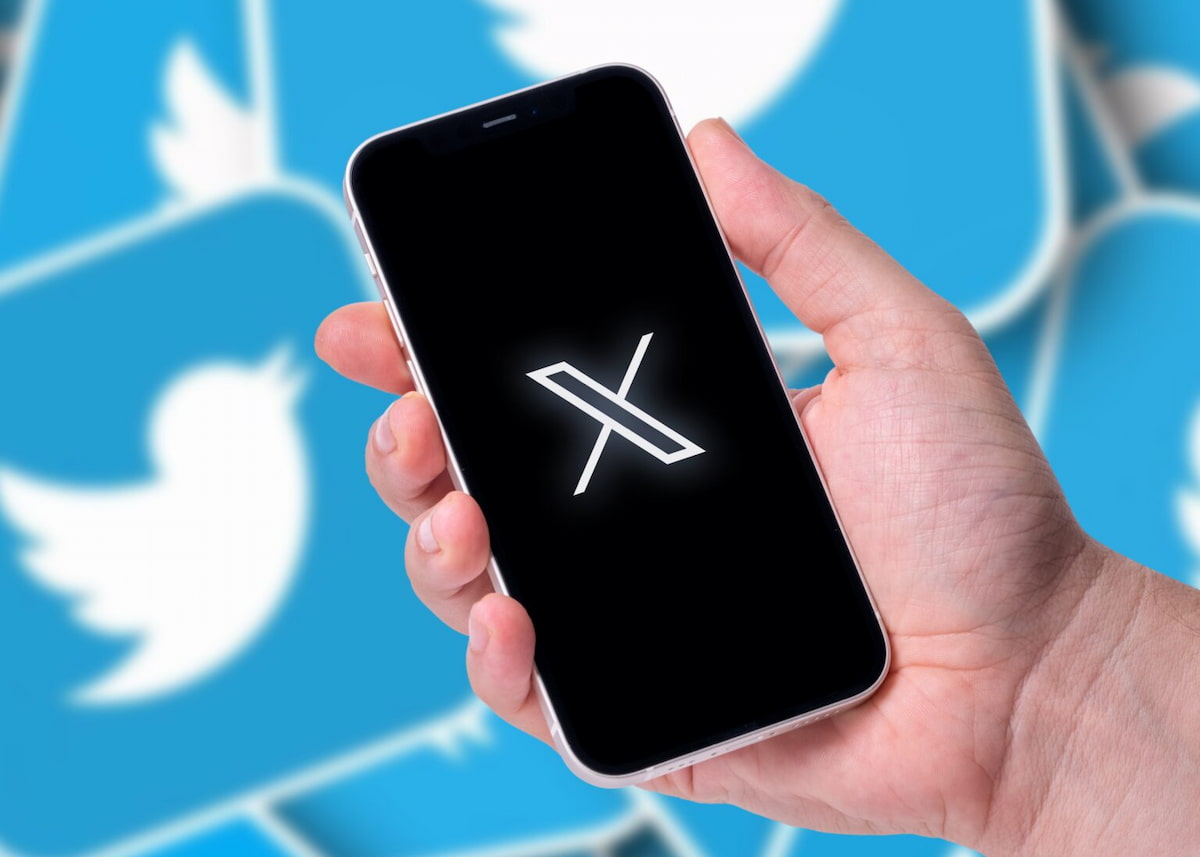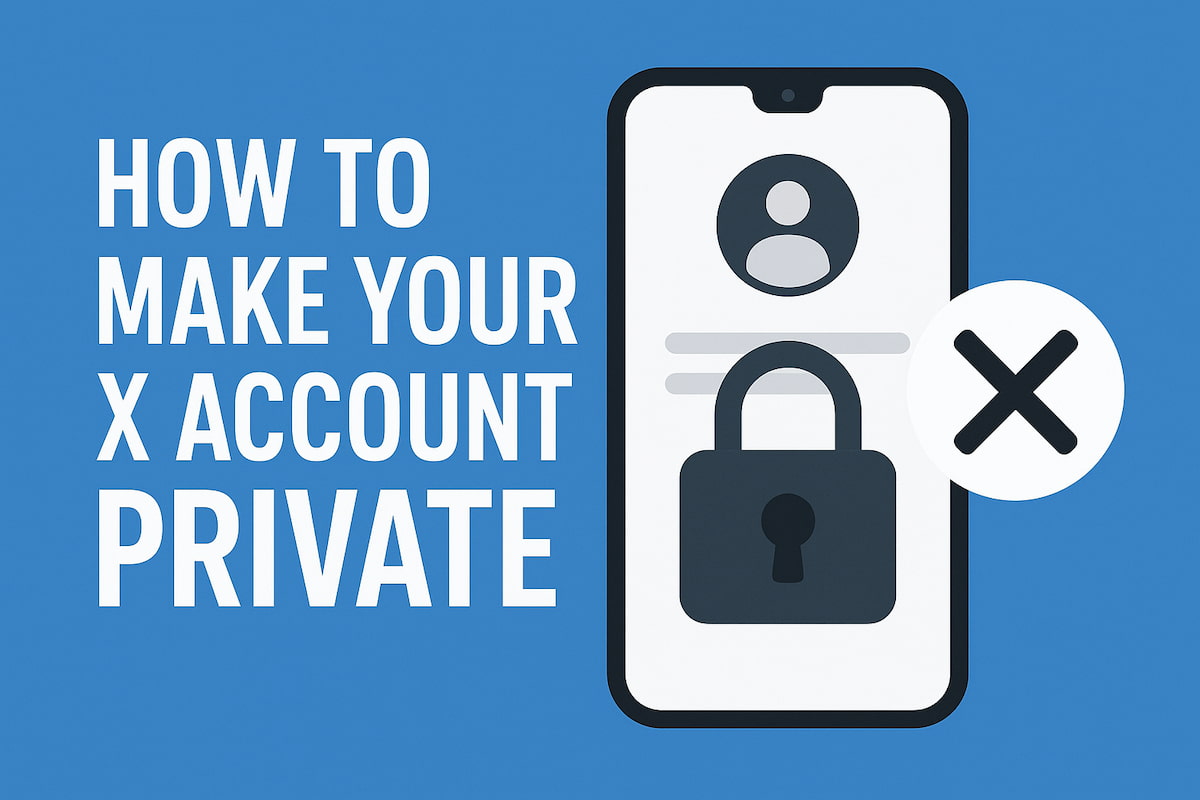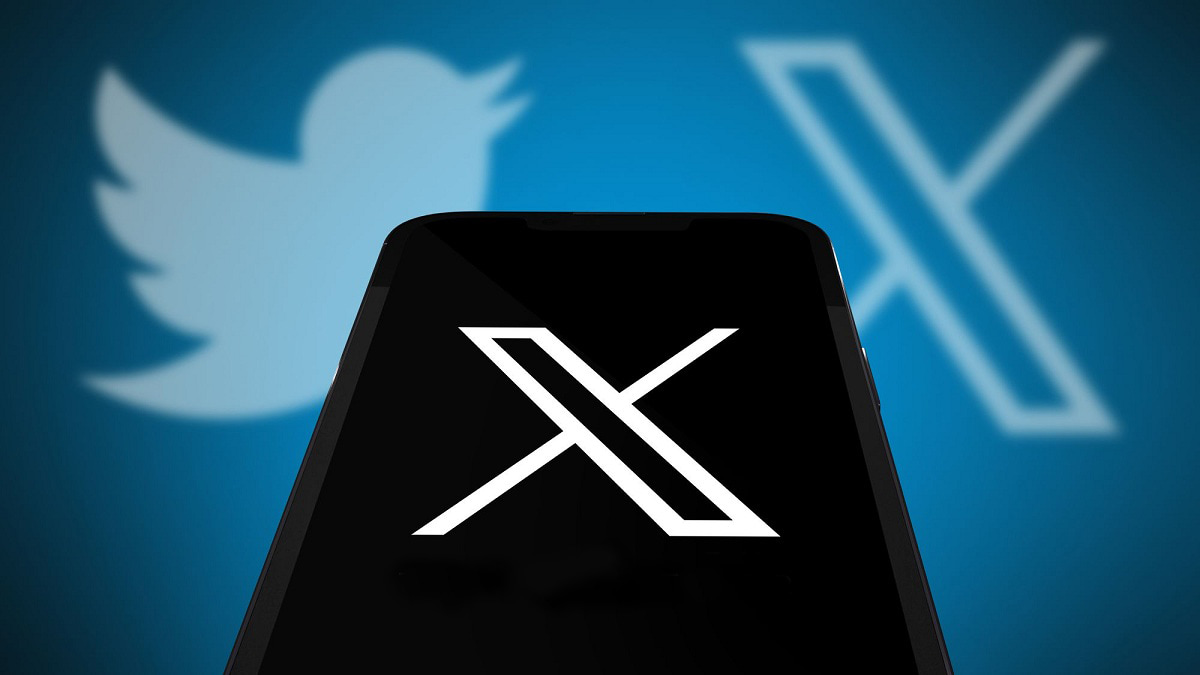Are you posting actively on Twitter but not seeing the results you hoped for? It feels like your tweets are disappearing into a void, with hardly any responses, comments, or retweets? Clearly, something’s off. But before you pack up and move to another social platform, let’s pause and think: maybe it’s time to do a proper analysis of your Twitter account?
How do you do that? Don’t worry, we’re here to help you figure it out! Analyzing your account isn’t just checking stats. It’s your chance to find out how your content connects with your audience, which strategies are working, and what needs improvement so that every tweet hits the airwaves and finds its audience.
What is Twitter Account Analysis?
So, what exactly is Twitter account analysis? If you asked someone not familiar with X marketing, they’d probably say something like, “Well, it’s counting likes and retweets.” Just checking how many likes a post has, comparing it to previous ones, and calling it a day? If it were that simple, this article wouldn’t even exist.
In reality, account analysis means understanding how, when, and why people interact with your tweets. In the end, you uncover the secrets of your audience and content strategy. And when you know these secrets, you can communicate and market much more effectively. But let’s see what basic and advanced analysis really involves.
Basic Account Analysis on X
Let’s start with the basics! Basic analysis is the first step in X analytics. We look at the obvious metrics: follower count, tweet frequency, and key engagement metrics like likes, retweets, and replies.
This gives us only a surface-level understanding of how active the account is and its visibility. Basic analysis can show you that you’re popular, but it won’t tell you why.
Advanced Twitter Account Analysis
Now let’s move on to more hardcore analysis. Advanced analysis includes everything in the basic analysis, plus so much more: hashtag performance, posting times, reactions to different types of content, tone of communication, and audience demographic and geographic data. In the end, you get a thorough and impressive set of information.
With this, you don’t just know what’s popular, you know why. This is because you start to understand which topics create the most buzz, what time of day your followers are most active, and how different elements of your content interact with each other.
This type of analysis also involves tracking changes and trends over time. You can see if your audience is growing, how hashtag preferences shift, and what events drive the most discussions.
To visualise such metrics with ease you can try Power BI data connectors that would provide real-time advanced visualisation.
In short, you’re not just looking at numbers, but you’re hearing what those numbers are telling you. And the deeper you get, the more valuable information you’ll uncover.
Why Conduct a X/Twitter Account Analysis?
X/Twitter account analysis isn’t just a boring task for data nerds. It’s an important (and definitely not boring) tool for marketers and businesses online. If you’re working on building your personal brand, it’s definitely worth taking a more strategic approach to how you use X. Let’s see the benefits it brings to the table.
Benefits for Businesses
Understanding Target Audience Behavior
Why is this important? Because knowing your audience’s preferences helps you create content that resonates with them.
For example, let’s say you launched a series of tweets promoting a new product. From the analysis, you learn that tweets with video reviews get 40% more engagement than those with just text or images. This tells you your audience responds better to visual content, and you can use this insight to plan future campaigns.
This is exactly what often happens with Sephora’s account. Here’s a typical post, even with visuals. Check out the engagement metrics:

And here, the engagement metrics are twice as high for a post where they use video format:

Determining Content Strategy Effectiveness
Every tweet you send is a mini-experiment. If you analyze the reactions to different types of posts, you can figure out which ones work best and which don’t. This allows you to optimize your strategy and focus on the winning content.
Each tweet gives you data to analyze. For instance, you might notice that tweets posted in the evening get 30% more retweets and comments. This suggests that your target audience is more active during that time. Use this information to adjust your posting schedule and, as a result, improve engagement and reach.
You can also compare these findings with a general best-time-to-post chart, which is statistically based but universal.

Twitter’s Impact on Overall Brand Presence in Social Media
Twitter doesn’t operate in a vacuum. It interacts with your other social platforms and creates synergy or, sometimes, dissonance. All of this builds your brand’s overall image. Analyzing X profile shows how it improves brand awareness and pulls in new customers.
Picture this: you’ve just wrapped up a powerful campaign on X, and suddenly—boom! You notice a surge of visitors to your website coming straight from Twitter. Google Analytics and other tools confirm the data. Your tweets actually hooked people, made them visit your site and maybe even led them to make a purchase or sign up for updates.

So, your message was heard, it resonated, and it led to real actions that uplift sales.
Benefits for Personal Accounts
Analyzing Follower Growth and Engagement
If you’re aiming to become an X star or just looking to strengthen your influence, analysis will show which of your actions bring the most growth and how to increase audience engagement.
Identifying the Best Topics and Posts for Growth
What gets your followers buzzing with excitement? The analysis will highlight the topics and types of posts that attract the most attention. The result? You’ll use this data and grow your popularity and influence.
Imagine you’re playing around with different themes on your X (from exploring the corners of coffee culture to getting into modern photography). Then, you find out that your coffee-related tweets are a massive hit. They’re getting three times more retweets and comments than anything else. That’s your green light to take all bets on the topic! Why not start a series of interviews with top baristas in the city or review the most unique coffee shops around the world? This will make you more popular and also establish you as a go-to expert in the coffee scene.
Improving Your Personal Brand Through Successful Post Analysis
What tweets make you stand out? Analyze your performance and identify which of your posts are the most effective at building your personal brand.
Well, imagine you’re in tech. If your tweets on the latest tech innovations go viral, it means your audience values your perspective on tech. Analyze which aspects of these innovations are grabbing the most attention. Maybe it’s time to start a blog or podcast where you get into these topics with other experts? It’s a fantastic way to grow your personal brand in the tech sphere.
And if you’re unsure what topic will engage your followers the most, just ask them through a poll! It’s easy, straightforward, and highly effective. Polls, obviously, give you direct feedback from your audience. But besides that, they elevate engagement.
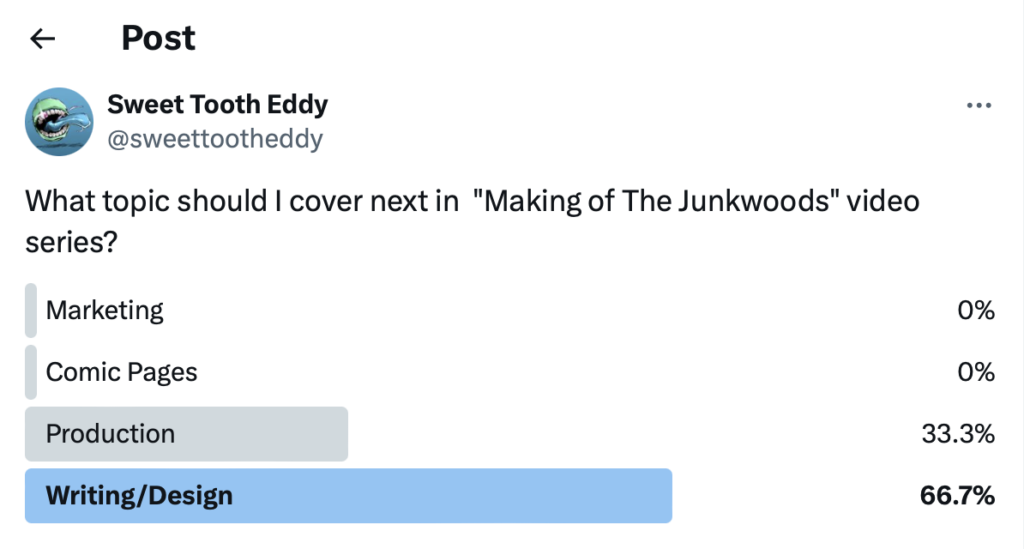
Key Metrics for Twitter Account Analysis
Let’s check out the metrics that really drive your Twitter account. Remember, you shouldn’t just count likes, you need to understand what’s behind them!
Analyzing Your Bio
Let’s talk about what to focus on first: your bio. It’s your first shot at making an impression. A well-made bio can grab attention instantly, highlight what you’re all about, and connect you with potential followers. It’s your chance to tell the world who you are and how you can add value without going into a long explanation.
Your bio should be clear and specific, with no fluff. Every word should work for you, emphasizing your uniqueness and professionalism. Include relevant keywords and you’ll upgrade your visibility and help the right people find your profile.

And if you’re linking out, make sure it’s an updated and relevant page that provides more info about you or your business. Nothing kills interest faster than a broken link or outdated content.

Also, don’t forget that some people do Twitter bio searches. So, make sure your bio is “searchable.” Think about what terms your potential followers might use to find you.
Keep your bio in line with your brand’s tone, but don’t be afraid to get personal and creative as it adds personality and charisma.
Follower Growth Trends
To understand who’s sticking around and who’s walking away, look at your follower growth and loss over time. This shows how well you’re attracting and retaining your audience. The main idea is not just to pull in new followers but also to keep the ones you already have! Pay close attention to this balance.
But chasing follower count without considering their quality and engagement? That’s like building a castle on sand. Looks impressive, but is it really?
You’ve definitely come across accounts with half a million followers but only five likes on each post, right? It’s pretty sad and awkward at the same time.
That’s a clear sign something’s off. Maybe most of the followers are bots, which tank your engagement stats and make data analysis a mess. Or maybe the content strategy isn’t hitting the mark and failing to engage even those who are already following. Either way, it’s a call to action.
Check out the account of the well-known beauty brand Maybelline New York. Impressive follower count, right?
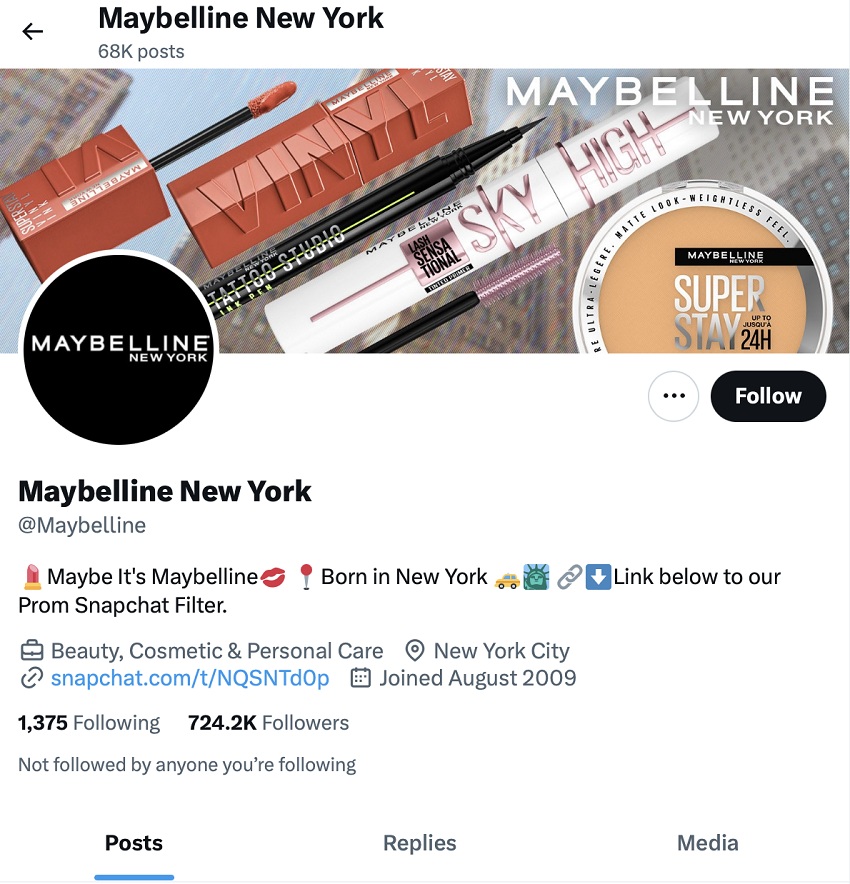
But are the engagement metrics just as impressive?

So, analyzing follower growth should always go hand-in-hand with analyzing their engagement. Let’s talk about that next.
Engagement as a Barometer of Interest
Engagement is your main barometer. Likes, retweets, replies, and clicks tell you a lot about how your audience is reacting to your content. If engagement starts dropping, that’s your first red flag and it’s time to switch things up. If it’s growing, you’re on the right track.
And we’ll probably never stop saying this: it’s always a good idea to experiment with your content to figure out what works best.
When the retweets and mentions start pouring in, by the way, here’s a pro tip: consider using an X alert tool. Our go-to is Twilert. It’s like X’s advanced search, but way more powerful: it’s flexible and laser-focused on specific results. We love it for its easy setup and accuracy.
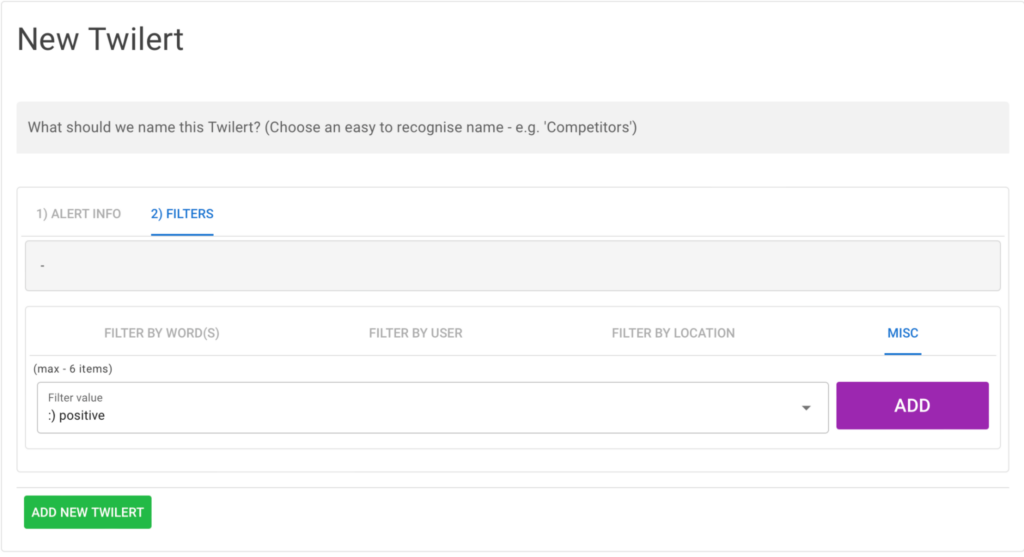
You log into your account and see a dashboard where you can create “alerts.” Choose a keyword, phrase, or hashtag you want to track. You can even add geographic filters to only get notifications about tweets from a specific region or city. There’s even sentiment analysis—that’s next-level stuff!
When someone mentions the words or phrases you’re tracking, Twilert sends an alert straight to your email, either in plain text or HTML. It’s an awesome tool!
When and How Often Should You Speak to the Audience?
Next up, pay close attention to your posting rhythm.
The frequency and timing of your posts are just as important. You don’t need to flood your followers with posts every minute, but going silent for weeks is a no-go too. Nothing kills engagement faster than disappearing for a few weeks and then popping up with a couple of random posts. If you want to keep your audience engaged, you need to be smart and consistent.
Sephora’s account posts daily, and on weekends they often drop tweets twice a day. They’ve definitely got a solid posting rhythm!

Anyone who runs a blog or is active on social media will tell you: consistent posting is key to keeping your audience’s attention. You might think popular bloggers don’t take days off or go on vacations, right? Of course, they do. The secret is they plan content ahead of time. They use scheduling tools to make sure their content is still going live, even when they’re chilling on the beach or handling personal stuff.
Tools like Buffer or Hootsuite are perfect for this. They let you prep content in advance and schedule it to post automatically.
Figure out when your audience is most active and tailor your posting schedule around those peak hours. This will increase the chances that your posts get seen and appreciated.
The Power of Hashtags and Keywords
One thing that’s fairly easy to analyze and should always be under your control is the list of hashtags you’re using for your account. Twitter is the undisputed king of hashtags across the internet. It doesn’t matter if you’re a big brand, running a personal blog, or just jumping on X occasionally to chat or post a quick note, no hashtag = weak visibility. That’s just how the platform’s algorithms work.
The trick isn’t to blindly throw popular hashtags into your posts. You need to find the ones that genuinely interest your potential customers or followers. It’s all about strategy. When choosing hashtags, balance is key.
Specialized and niche hashtags help you attract an audience actively searching for specific information. Trendy hashtags can uplift the reach of your posts, but they need to be relevant and match the content of your tweet. Branded hashtags build recognition and help create a community around your brand.
Make sure you’re not overloading your tweets with hashtags. The optimal number is 1-3 per post (at least, that’s what X recommends). That’s enough to support visibility. Add too many, and your tweet will look like spam (and will turn people off). Seriously, engagement can drop by up to 17% if you go overboard with tags.
In short, hashtags and keywords help you compete for visibility and attract new audiences. Always use analytics to see which ones are most effective, and don’t be afraid to test new ones. This will keep you in front of people looking for fresh and interesting content. Plus, always monitor trending hashtags and keep an up-to-date list of relevant tags.
Visual Content
Another thing worth analyzing is the type of content you’re posting. Does your account look like it’s stuck in 2010 with a bunch of text-only tweets? How’s your reach and engagement holding up?
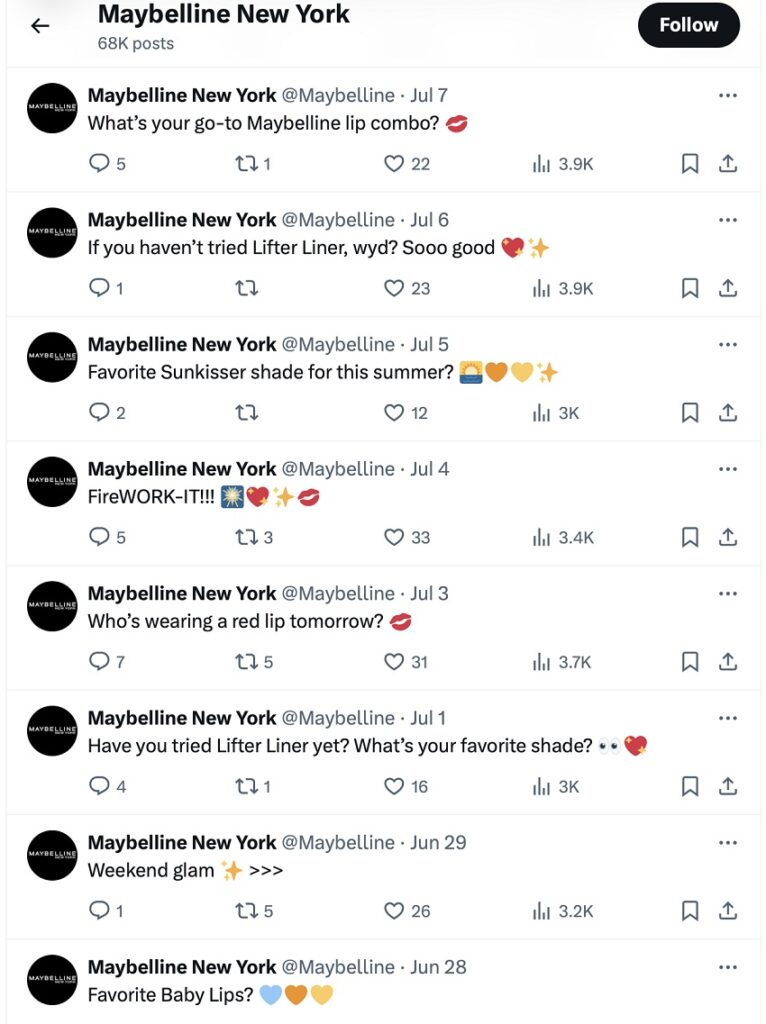
Don’t forget about visual content. Images, videos, and GIFs can significantly uplift engagement. Run a quick experiment: analyze how your followers react to tweets with images or videos compared to plain text posts. This will give you insight into what really grabs your audience’s attention. Use that info to make your feed not only visually appealing but also highly engaging and interactive.
Take some inspiration from Budweiser. Their interactive post blew up with engagement:

And here’s a text-only post that didn’t perform as well:

Tools for Analyzing Twitter Accounts
Analyzing data is like looking into a mirror that shows you both the beauty and the small flaws you can fix. The tools we’re about to talk about are not just mirrors, they’re more like magnifying glasses.
Twitter Analytics
X spoils us with its built-in analytics toolset—Twitter Analytics. It lets you see how many people viewed your tweets, how they engaged with your content, and which topics sparked the most interest.
Checking out X Analytics gives you a full report on how your account is performing, from follower growth to engagement levels. For example, you can learn how a specific tweet helped attract a new audience or which post sparked the biggest response. Of course, all this goodness comes with a paid subscription.

While Twitter Analytics is convenient and functional, there are a few things that might give you pause.
First, if you’re seeking an in-depth understanding of your audience or highly specific insights, X Analytics will definitely seem somewhat limited. It handles the basics well and gives you a solid understanding of general trends, but for more advanced analysis, you might need to turn to third-party tools.
Also, keep in mind that data on Twitter Analytics isn’t updated in real time. So, you may have to wait a bit to see the latest results from your campaigns or posts.
Another thing: sometimes, you might feel like you’re losing control over how to interpret the data. X Analytics presents info in a very general format, and if you’re not familiar with how to read the data correctly, you could end up making the wrong decisions.
So, here’s the takeaway: if you’re running a small personal blog, the built-in tool might be more than enough. But if you’re a data geek or pouring serious ad budgets into X and want to know every tiny detail of your campaigns, we’ll be discussing solutions that are more suited to your needs later in the article.
Third-Party Tools
Need to go deeper into your Twitter data and get what’s really happening with your X account? Built-in analytics won’t cut it. You’ll need to turn to third-party tools like Hootsuite, Sprout Social, and Followerwonk to upgrade your analysis.
These tools help you perform a super detailed, almost surgical analysis of your account. Beyond just crunching numbers, they let you truly understand which of your marketing moves are hitting the mark, how to tweak your content to spark interest, and how to engage your audience in real time to drive active conversations. These tools are made for the pros.
When using them, you’re not just seeing the big picture but also figuring out the little details that could lead to huge improvements in your X strategy. These are your eyes and ears on X.
Conclusion
So, we’ve explored Twitter account analysis and learned how to use all this data to ensure your X efforts not only make noise but strikes the right tone. We talked about the power of analytics, highlighted the role of hashtags in accelerating visibility, and didn’t forget about the visual content that captures the eyes&hearts of your followers.
Remember, every tweet is like a piece in the mosaic of your brand. X account analysis ensures each piece is in the right place and makes its own contribution to the bigger picture. Use analytics tools to understand what’s hitting the target and what needs tweaking. This is your chance to learn from both your mistakes and your successes.
Use the insights wisely. Experiment with content, optimize your strategies, and don’t hesitate to try new approaches.

